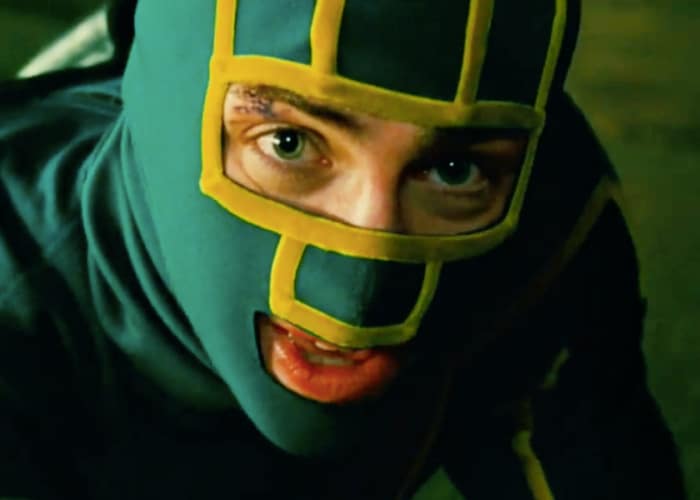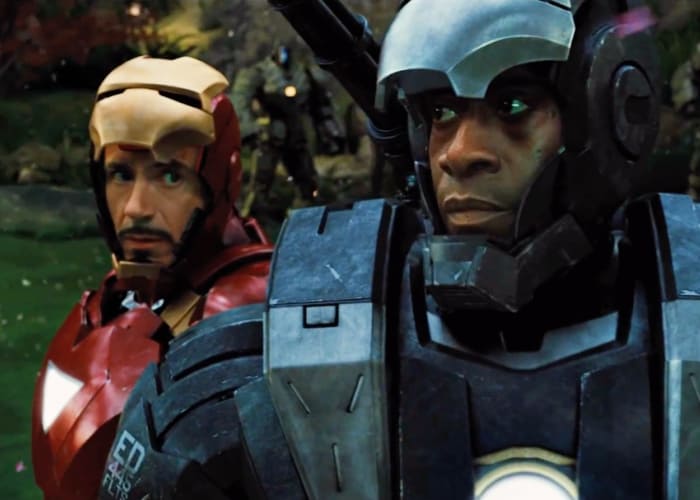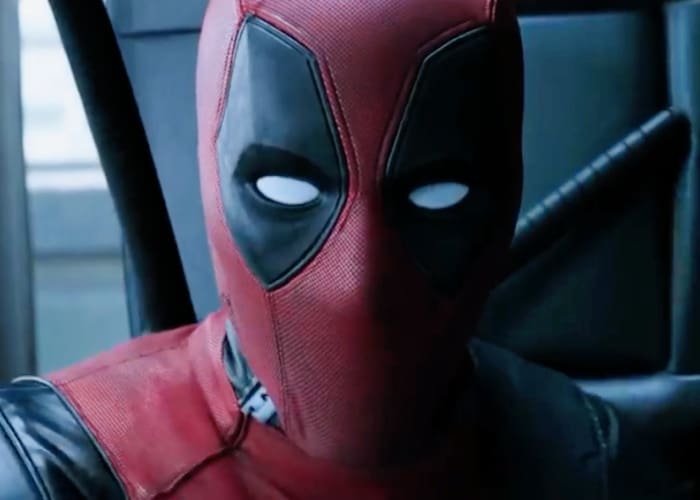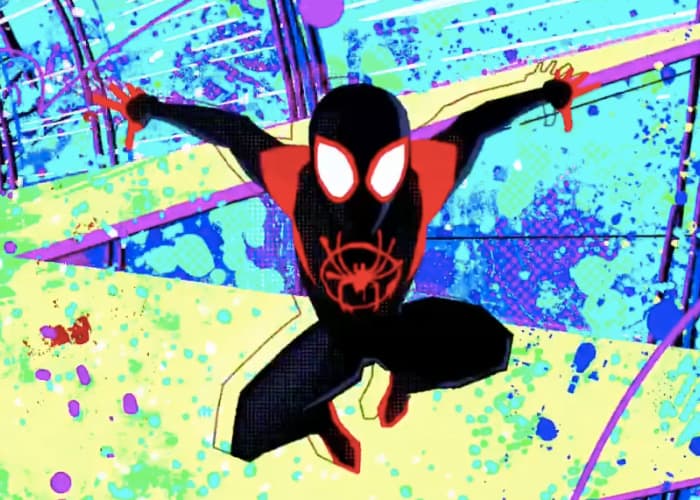This is part of our Decade Rewind, which runs throughout November. Keep up as we look back at the best, worst, and otherwise interesting movies and shows of the 2010s.
Ten years ago, Martin Scorsese was certainly content with the state of comic book cinema. They knew their place. While 2008 provided a couple of entries (The Dark Knight, Iron Man) flexing delusions of grandeur, the slew of modest hits to straight-up duds (X-Men Origins: Wolverine, Watchmen, The Surrogates) that followed in their wake confirmed spandex cinema to be little more than a slight variation on the typical wannabe blockbuster. Think pieces questioning the culture’s fatigue of superhero movies were already in full swing, and no one could have predicted the glut of punch-em-up product still on the horizon. Well, maybe Kevin Feige.
In August of 2009, the Walt Disney Company purchased Marvel Entertainment for $4.24 billion. “The Avengers Initiative” promised during the first of many post-credit sequences suddenly received a tremendous boost of confidence from the Mouse House. With such financial weight behind them, the Marvel Cinematic Universe (MCU) would not be denied even while their next few steps stumbled into a critical wall of doubters. Iron Man 2, yeah, we’ll get into it in a sec, but spoilers for our present, according to USA Today, Marvel has since made Disney more than $18 billion at the global box office. All that green has broken the brains of auteurs raised on the French New Wave and sent them screaming into the comforting cuddle of streaming services they once feared. The enemy of my enemy is my friend. Good luck to them.
The first theatrical comic book movie of the decade was Kick-Ass. Audiences were well-versed in the tropes of the genre as well as the pleasures and pains of fandom, and were ready to see director Matthew Vaughn take a blowtorch to the narratives that mostly presented safe, righteous victories for their heroes. The titular protagonist is a fanboy first, crimefighter second. When his fantasies require more fuel than the pages have to offer, he modifies a scuba suit into a costume and takes to the streets where other psychotic eager beavers attempt to bring justice to the depraved. Turns out thwarting evil results mostly in battered bones and shattered egos. Good thing this is America, and weaklings can find strength in over-the-counter firepower.
While it wore the skin of other vigilante origin stories, Kick-Ass considered the possibilities of entertainment beyond Batman, Spider-Man, and the already proven commodities. 2010 would see other studios cranking out a bevy of flicks led by fringe characters: Jonah Hex, The Losers, Red, and Scott Pilgrim vs. The World. That last one is a bonified masterpiece of form challenging form, featuring an insane collage of celebratory references stitched together seamlessly by Edgar Wright. The movie elevated its director to a maestro in my mind, but Scott Pilgrim vs. The World would have to wait and find its cult after fizzling at the box office. What about Iron Man 2, though?

As our archival review of the film states, “The pressure was on.” The third film in the proposed MCU needed to reveal the unlimited potential of a universe bursting with characters. We love Tony Stark, but we better love Rhodey, Black Widow, Nick Fury, Justin Hammer, Anton Vanko, and his bird just as much. Jon Favreau‘s sequel required precision, an ability to match the character with an equally deft plot, and more than anything else; it had to kick more ass than Kick-Ass. Marvel Studios was the big dog in this hunt but they had to demonstrate it.
At the time, Iron Man 2 was received as a bloated mess of improv that failed to excite a giddy glee that the filmmakers expected from sprinkling Wakandan Easter eggs. In hindsight, the film is far less painful, but nowhere near the self-assured link in the current impenetrable MCU-chain. Thankfully, or regretfully depending on where you fall in the Marty debate, the Disney machine could not stop. The next year, Captain America: The First Avenger and Thor allowed crucial insight into worlds far removed from Stark’s Malibu techno-haven. Neither film competed with the original Iron Man‘s gross, but they both expanded the MCU exponentially. If crowds accepted a Norse god living in the same realm as an armored playboy, then rocket raccoons and shape-shifting Skrulls were not far behind.
When the first phase of the MCU concluded with The Avengers in 2012, mastermind producer Kevin Feige stood atop a mountain of cash built from an unapologetic embrace of comic book minutia. His ultimate gift emerging as an ability to siphon gold from decades of monthly publications and smelting it into a delight easily palatable for moviegoers. Are the MCU iterations of Iron Man, Captain America, and Thor identical to the ones from the books? No, but they’re familiar, and they’re shaped by charismatic and attractive actors hungry to sign their careers away to a multi-film contract.
As the producers of Marvel Studios took turns Scrooge McDuck-ing in their vaults of money, Warner Bros. had their snout pressed firmly on the exterior glass. They wanted in, and they would not let Christopher Nolan‘s Dark Knight trilogy (which somewhat sputtered to an end that same year under the shadow of The Avengers and the grumble of Tom Hardy) or the reprehensible Green Lantern be their final say on the matter. Zack Snyder had formed an army of acolytes around his remake of Dawn of the Dead and the slavish adaptations of 300 and Watchmen. He seemed to get geeks, or at least the ones of the brah variety.

With the slim blessing/story credit of Nolan, Snyder was handed the reigns of Superman, and Warner Bros. kicked back on the desperate hope that the seeds planted by Man of Steel would birth their DC Comics Extended Universe. Oof. Snyder delivered a grim, stodgy mediation on the miserable weight placed upon a god-being who hovered above Earth, questioning whether he should interfere or not. Many clamored for the beacon of altruism once represented by Christopher Reeve and now championed by Marvel’s mightiest. Snyder said, “Fuck that shit,” and the result is a Man of Steel that feels like a betrayal to the source.
Criticisms toward Snyder’s apocalyptic destruction of Metropolis caused the director to double down in his follow-up, making the catastrophe the point rather than a careless bout of fist-pumping violence. Batman v Superman: Dawn of Justice picks up immediately amidst the carnage of Man of Steel‘s climax with Bruce Wayne (Ben Affleck, a.k.a. the forever condemned Batfleck) rummaging through backlot bodies. Leaning hard into 9/11 imagery, Snyder stirs rage in the fragile human caught on the ground, mimicking the path of countless comic book scribes who contrived ways of bringing DC’s two titans into combat and inevitable stalemate. In the blue corner, we have the dark knight of vengeance! In the red corner, we have the apple pie boy scout of Smallville. In the middle, we got – “MARTHA!”
BvS marked a turning point in the online debate surrounding superhero cinema. A vocal minority refused to hear complaints directed against their precious doomsday brawlers and took to Twitter en masse to attack any dissenting opinion. A new old war sparked between the Marvel and DC camps with Warner Bros. scrambling to course-correct after every outing while Marvel Studios mostly improved by hopping through sub-genres with Captain America: The Winter Soldier and Guardians of the Galaxy. Just as you would begin to question a choice like Avengers: Age of Ultron or Ant-Man, the sheer momentum of their production steamrolled through doubt and even revealed how prior odd film choices actually enhanced future endeavors. Hawkeye’s farmhouse for the Avengers: Endgame win.
Undoubtedly, Marvel Studios and Warner Bros. controlled most of the decade’s superhero conversation, but often, it was the irreverent children of Kick-Ass that offered the largest surprises and pleasures. Dredd was the second attempt to adapt the dystopian 2000AD comic from across the pond, and blessedly it knew its audience would never match those of the Big Two and kept its budget appropriately small and its rating the hardest of the hard R. Written by an Alex Garland itching to jump behind the lens to direct, Dredd plants its faith in the anger, cynicism, and humor of the comic and finds a frown that will never be matched in Karl Urban. The film revels in its bloodshed supplying an antidote for the kid-tested, mother-approved formula of the mainstream.

Adult content became the answer for a 20th Century Fox just killing time before their Disney consumption. They may have found brief creative respite in their X-Men franchise when they nabbed Matthew Vaughn for their First Class pseudo-reboot, but the diminishing returns of Days of Future Past, Apocalypse, and Dark Phoenix exposed a film series bankrupt of ideas. And, oh yeah, they lost The New Mutants to a development void where it may never return. Their anguish to perform alongside the majors encouraged their filmmakers to free their filthy minds. Director James Mangold bunted with The Wolverine and got on base, but it wasn’t until Logan popped claws in 2017 that an X-Men movie achieved both a critical and commercial home run.
Well, to be fair, a year earlier Deadpool scored its smutty rating and ran off with a booty of coin and some redemption for Lantern Corps dropout Ryan Reynolds. If anything suggested there was still life to be had for these merry band of mutants, it was the merc with a mouth. Deadpool mocks the passion and sincerity of fandom, breaching the fourth wall to lambast those that foolishly observe his world while never skimping on the action elements the audience demands. The bastard eats his cake and has it too, and will be the only X-anything to scrabble his way into the new MCU digs. Good for him.
Warner Bros. closed out the decade on a quartet of flicks as far removed from Zack Snyder’s morose vision of costumed bum fights as possible. Wonder Woman, under the guidance of Patty Jenkins once rejected by Marvel Studios, lept from the trenches of World War I to smash the hateful men who claimed the globe as their own, as Kevin Feige swore that his streak of straight, mostly blonde, white dude-fronted pictures would soon be broken. For the first time in their recent rivalry, DC had one up on Marvel, and the consequence was a blockbuster success that took a stranglehold on the cultural conversation. Mainly, Wonder Woman was fun. Justice League tried to do the same, but endless philosophical switchbacks during pre-production, production, and post-production ruined any such chance. Aquaman and Shazam! were the true successors of Wonder Woman and did their best to deliver a healthy mix of badassery and Super Friends cheese. An octopus on drums? Yer god damn right.
Not to let DC control the discourse, in 2018, Marvel Studios finally dropped Black Panther. Directed and co-written by Ryan Coogler, the film supplies all the beats we’ve come to crave from superhero narratives, but the action is fueled by a socially conscious heart and the landscape where those battles roar is the largest cinematic celebration of the African and African-American experience. In the same year that saw half the MCU dusted in Avengers: Infinity War, Black Panther was the film that made the most noise, continuing the more consequential examination surrounding representation on screen, and becoming the first superhero movie to be nominated for Best Picture at the Academy Awards. Marty in the back, “WTF?”

Maybe the most stressful and bizarre character to track over the last ten years was Spider-Man. Peter Parker began the decade as Andrew Garfield in The Amazing Spider-Man reboot, which seemed like a good enough resurrection after the disastrous Spider-Man 3 just five years earlier, but then came the repulsive sequel with its Schumacherian villains and its uncomfortable fumbling of the Gwen Stacy tragedy. Refusing to let the despair take hold, Sony Pictures Releasing struck an unprecedented deal with Marvel Studios to lend out Spidey for Tom Holland to wear in Captain America: Civil War and as many MCU movies as they can manage before their partnership explodes. Meanwhile, they attempted to mad science their SUMC (or Sony’s Universe of Marvel Characters) with a go-for-broke Venom spin-off and the animated Spider-Man: Into the Spider-Verse.
Venom is a whole lotta something, and it either tastes good to you, or it’s a toxic blast of spew. Spider-Man: Into the Spider-Verse, on the other hand, is a miracle movie. Operating as the ultimate definition of the Peter Parker character as well as his driving credo of “With Great Power Comes Great Responsibility,” Into the Spider-Verse recognizes the good in all of us, and encourages everyone to take up the mantle of heroism to effect positive change in the world around you. On top of that, the animation appears unlike any other effort, approximating the pleasures of stapled comics and cartoons of every era. After an onslaught of superhero movies, Miles Morales swings into the neighborhood to show filmmakers and fans that there are still new avenues to pursue within the genre.
With four comic book movies (Avengers: Endgame, Captain Marvel, Spider-Man: Far From Home, and Joker) standing strong amongst the global box office in 2019, Scorsese’s superhero theme park doesn’t look like it will be shutting its doors anytime soon. Disney mastered the formula, now other creators are invited to subvert/pervert the process. As the underground comix scene bubbled forth in the 1960s, the next decade should see a deeper assault upon the established recipe with more aberrations along the lines of Kick-Ass, Dredd, Into the Spider-Verse, and HBO’s Watchmen series. Little Caesar gave us the gangster picture in 1931, and Francis Ford Coppola advanced it into The Godfather forty-one years later. We’re ready to meet our Corleone clan.
The post A Decade In Spandex appeared first on Film School Rejects.
0 comments:
Post a Comment